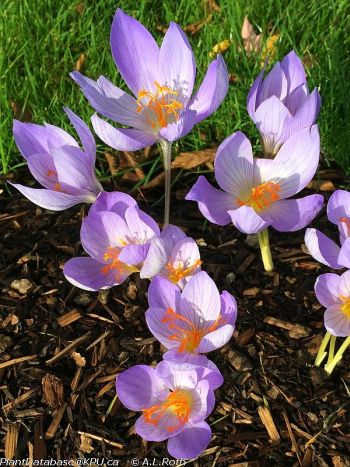Scientific Name:
Crocus speciosus
Pronunciation:
KROE-kuss spee-see-OH-sus
Common Name:
fall flowering crocus, Bieberstein's crocus
Family Name:
Iridaceae
Plant Type:
Flowering pot plant, Herbaceous perennial
Key ID Features:
Typical crocus but begins flowering in the fall before the leaves appear; leaves basal, linear-filiform, most 10-15cm long x 1-3mm wide; flowers one per corm, ~5cm wide, styles orange and highly branched.
Habit:
Upright
Form:
Columnar
Texture:
Medium - fine
Mature Height:
0.1 - 0.2m
Mature Spread:
< 0.1m
Origin:
Central / west Asia
Hardiness Rating:
Zone 4: (-34 to -29 °C)
Exposure:
Full sun, Part sun/part shade
Soil/Growing Medium:
Well-drained
Landscape Uses:
Alpine, Attract beneficial insects, Container planting, Indoor plant, Perennial border, Rock garden, Spring interest
Additional Info:
Google. Compare to Colchicum autumnale (autumn crocus) which has unbranched stigmas and larger anthers like other members of the Liliaceae.
Leaf Morphology:
Form:
Grass-like
Arrangement:
Basal
Texture/Venation:
Soft flexible, Parallel venation
Surfaces:
Glabrous
Colour in Summer:
Green, White midrib
Shapes:
Filiform, Linear
Apices:
Acute
Bases:
Sheathing
Margins:
Entire





